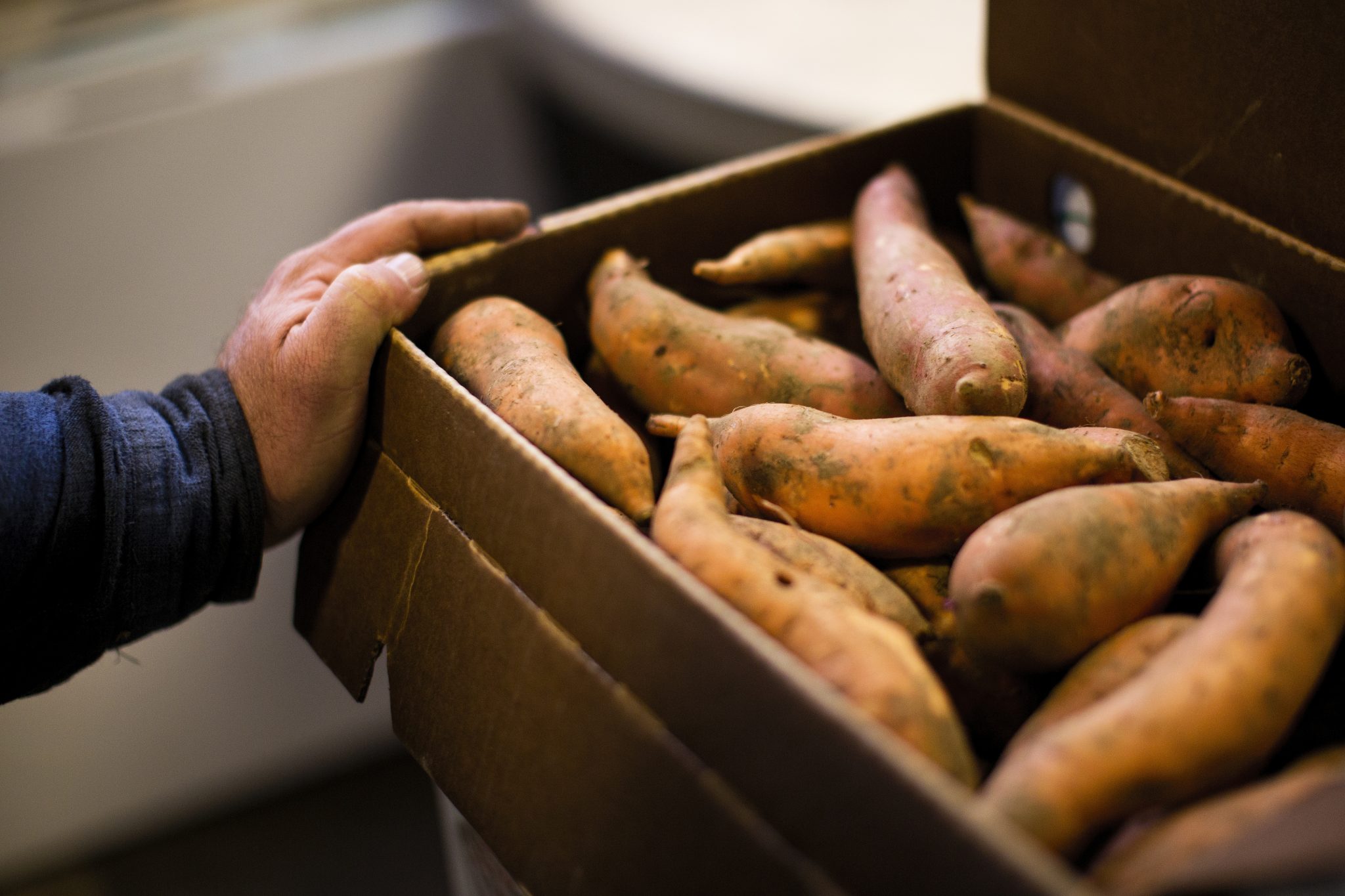Lawn & Garden

You’ve worked hard to grow healthy sweet potatoes. Keep them that way off the vine using these best practices.
One of the most important things to keep in mind when harvesting sweet potatoes is that the roots of the sweet potato are alive. The roots require sufficient oxygen to survive, even in storage. Changes in the environment, such as temperature and relative humidity, will affect the shelf life of the sweet potato. Keeping these facts in mind will help you make good management decisions for your sweet potato crop.
Sweet potatoes are usually stored in nonrefrigerated commercial or farm warehouses. This method of storing offers the primary advantage of orderly marketing several months after harvesting. After they are harvested, sweet potatoes should be cured. Do not wash sweet potatoes before curing. Curing promotes the healing of cuts and bruises that occur during harvesting and handling. It also protects the roots from storage diseases and excessive shrinkage while starches are being converted to sugars and other flavor components. Curing the roots increases the post-harvest life of the sweet potato. To cure roots, hold them at 85 degrees F with 90 to 95 percent relative humidity (RH) for 4 to 7 days.
After curing, reduce the storage temperature to 55 to 60 degrees F at 80 to 85 percent RH. Most properly cured sweet potato cultivars will keep for 4 to 7 months. Due to the sweet potato’s tropical origin, roots will develop chilling injury if held at temperatures below 54 degrees F. Short periods at temperatures as low as 50 degrees F will not cause damage, but after a few days at 50 degrees F or shorter periods at lower temperatures, sweet potatoes may develop flesh discoloration, internal breakdown, off-flavors, hard cores when cooked, and increased susceptibility to decay.
Temperatures above 60 degrees F will stimulate sprout development (especially when combined with high humidity), pithiness, and internal cork (a symptom of a viral disease) when the virus is present. Sweet potatoes are usually stored in bulk bins or slatted crates. Palletization of crates and the use of pallet boxes facilitate handling.
Sweet potatoes can be cured in palletized field boxes in a room designed to provide recommended conditions for curing. After curing, the sweet potatoes can be moved to rooms in which storage conditions are maintained continuously. Refrigeration is used in some large sweet potato storage facilities to extend the marketing season when ventilation alone will not maintain low enough temperatures.
Sweet potatoes are usually washed and graded, and sometimes waxed, before being shipped to market. Consult the USDA Standards for Grades of Sweet Potatoes for details on the sorting and grading of sweet potatoes at https://www.ams.usda.gov.
Roots can be treated with a fungicide to reduce decay during marketing. Consumer packaging of sweet potatoes in film bags or overwrapped trays is done to aid marketing and should not be done before storage. The shelf life of washed and fungicide-treated roots in consumer packs is only 2 to 3 weeks. Weight loss of roots during marketing is much less in perforated film bags than it is in mesh bags.
Download a PDF of Harvesting and Curing Sweet Potatoes, ANR-1111.


